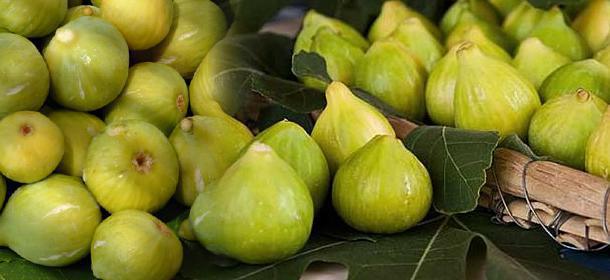The Protected Geographical Indication, the "White Fig of Cilento" refers to the dried product of the "Dottato" cultivar, a fine variety of fig found all over Southern Italy.
In particular, the protected product is derived from a specific ecotype of the Dottato cultivar, that has been selected and has gradually spread throughout Cilento over the centuries: the "Bianco del Cilento".
A product with unique characteristics and value, it is also popular abroad. The "White Fig of Cilento" DOP owes its name to the uniform pale yellow colour of the skin of the dried fruit, which is brown for fruit which has undergone a baking process. The flesh is typically pasty in consistency, very sweet, amber-yellow in colour, with mostly empty achenes and the interior receptacle almost entirely full. These features, which are excellent for the commercial category of dried figs, are precisely the traits that characterize the "Bianco del Cilento" DOP on the markets.
Packed in different forms, the Cilento figs are also marketed in the ancient way, that is placed in bulk in baskets made of material of plant origin that can be up to twenty kilos in weight. A traditional preparation still in use is the one that prepares "spiked" figs, that is speared onto two parallel wooden sticks to form "paddles" or "mustaccioli.".
The "Fico Bianco del Cilento" DOP is also marketed stuffed with almonds, walnuts, hazelnuts, fennel seeds, citrus peels or covered with chocolate, or even dipped in rum, in the aim of expanding the product range, especially at Christmas time. More and more in demand are figs that are dried, then baked golden, especially when they are stuffed.
The remarkable features of the product as described here are due not only to the intrinsic qualities of the Dottato variety, but also to the environment of cultivation and the processing of the fruit. In fact, the moderating effect of the sea and the natural barrier of the Apennines to the cold winter currents from the north-east, along with good soil fertility and optimum rainfall represent the ideal climatic conditions for the production of the Cilento figs. Furthermore, it should be emphasized that, in addition to the cultivation, the phases of drying and processing of the product are also carried out entirely in the geographic area of production, inside the agricultural structures and farms, in a harmonious process of interaction between the product, man and the environment. The ease of cultivation and the plant’s resistance to phytopathological adversities, has meant that the cultivation has earned the approval of the Cilento farmer who always finds space for the fig on his farm, either as a specialized or subsidiary product.


